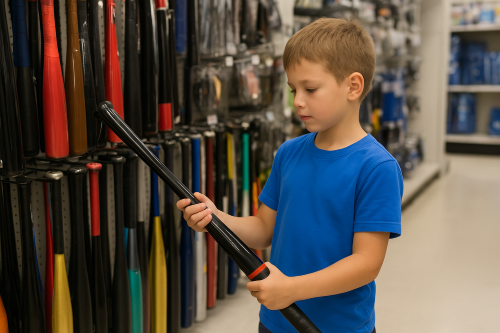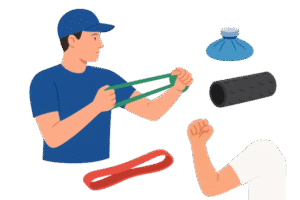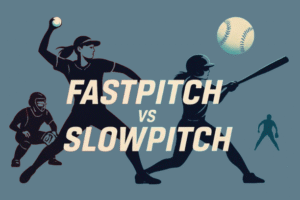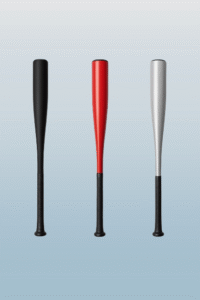A player develops with a well-fitting bat. As someone who’s been around youth baseball, I emphasize that bat length should match age, height and weight – much like how a child’s shoe size grows as they get taller. For example, Tee Ball players (ages 4–6) usually use only 24–26 inch bats, while high school players might swing 32–34 inch bats. Choosing the right baseball bat size is like finding the right tool – a bat that’s too long or heavy can slow your swing and reduce power, while one that’s too short sacrifices reach and power.
So selecting the right baseball bat size is crucial – just as wearing properly fitted shoes improves performance, a correctly sized bat helps players swing efficiently and safely. Baseball is hugely popular (nearly 16.7 million players in the U.S. according to MLB/SFIA), so getting the bat right is important for players of all ages.
Ages 5–7: ~24–26″ (Tee Ball size)
Ages 8–9: ~26–28″
Age 10–12: ~28–31″ (Little League)
Ages 13–16: ~31–33″ (Senior League)
Ages 17+: ~32–34″ (High School/College, BBCOR)
Tee Ball Bat Size Chart
The youngest players (roughly 4–6 years old) should use tee ball bats. They are very short and light to help little ones develop a smooth swing. These bats typically measure 24–26 inches and weigh only 12–16 ounces, with a 2¼″ barrel to match youth baseballs. In practice, a 4-year-old will often start with a 25″ bat, and by age 6 the bat might be up to 27″ in length. These bats, like training wheels on a bike, make it easier for young hitters to learn the swing.
Age 4: ~25″ bat (about 13 oz)
Ages 5: 25–26″ bat (13–14 oz)
Age 6: 26–27″ bat (14–15 oz)
Coach Pitch Baseball Bat Size Chart
Ages 7–8 are suitable for Coach Pitch (Junior Big Barrel) bats. Bats grow longer (around 26–29 inches) but remain fairly light (13–18 oz). They may have a larger barrel (up to 2¾″) to give young hitters a bigger sweet spot. Generally, a 7-year-old might use a 24–26″ bat, while an 8-year-old can handle 25–26″ bats. It’s like giving them a slightly bigger toolbox – more reach (length) without too much extra weight. When you give them little bigger toolbox, it gives them more reach (length) without adding too much weight.
Age 7: 24–26″ bat, -9 to -12 drop
Age 8: 25–26″ bat, -9 to -12 drop
Little League/Cal Ripken Baseball Bat Size Chart
As they get stronger, Little League (ages 9–12) players utilize even longer bats. Bats typically range 28–31 inches long and weigh 15–22 ounces. For example, 9–10 year-olds often swing around 28–29″ bats, while 11–12 year-olds use around 29–30″ bats, depending on their height and strength. The equipment expands with the player, much like when you go from a child’s bike to a full-size bicycle.
Ages 9–10: ~28–30″ bat, 15–20 oz
Ages 11–12: ~29–30″ bat, 18–22 oz
Senior League Baseball Bat Size Chart
Senior League is roughly ages 13–15. Bats jump to 31–33 inches for added power. Freshmen (age 13) often start with a 30–31″ bat, while 15-year-olds may use 32–33″ bats. These bats are heavier (often 19–30 oz) to match bigger hitters. Consider upgrading to an adult-sized power tool, which is heavier but has greater power.
Ages 13: ~30–31″ bat (drop around -5)
Age 14: ~32–33″ bat (-3 to -5 drop)
Age 15: ~32–33″ bat (drop -3)
High School & College (BBCOR) Baseball Bat Size Chart
High school and college players use BBCOR bats. These bats are always drop -3 with a 2⅝″ barrel. Lengths run about 31–34 inches. Typically, freshman/sophomores use 31–32″, juniors/seniors 32–33″, and college players about 33″. Bats are larger and heavier at this stage, giving adult players the reach and power they need without sacrificing control.
Ages 14–15 (HS freshman/soph): ~31–32″ (drop -3)
Ages 16–18 (HS junior/senior): ~32–33″ (drop -3)
College: ~33″ (drop -3)
Choosing the Right Baseball Bat Size
The best bat is one that fits you and your swing. Here are key tips I use to find the right size:
Arm Test
With the player standing, have them extend their arms straight out and hold the bat knob against the center of their chest. If the end of the bat just reaches their fingertips, the length is about right. It’s a quick way to match bat length to the player’s height.
Shoulder Height
A youth bat should not exceed the player’s shoulder height when held at their side. If it does, it’s likely too long. This simple check is like making sure a coat fits – anything longer will get in the way of a smooth swing.
Weight (Drop)
Younger players need “lighter” bats (bigger negative drop) for control, while older players move to heavier bats (smaller drop). For example, youth bats are often -10 to -12 drop, but high school players use -3 drop. Remember: a bat too heavy will slow the swing, and one too light won’t produce full power.
By combining these methods (and using the charts above), you can dial in the perfect bat size for any player.
FAQ
How does bat “drop” affect choosing a bat?
“Drop” is the length minus weight (a 30″, 20 oz bat is drop -10). A larger drop (like -10) means a lighter bat for its length, which helps younger kids swing faster. A smaller drop (like -3) means a heavier bat, used by older players. A young player will feel that the bat is overly heavy and slow if the drop is too short. Always check your league’s rules: USA Baseball bats often allow large drops, while BBCOR mandates -3.
Why are there different bat standards (USA vs BBCOR)?
Youth leagues (Little League and below) typically require USA Baseball (USABat) certified bats, which allow various drops and are designed for safety (smaller barrel sizes). High school and college require BBCOR-certified bats (drop -3, 2⅝″ barrel). This ensures bats perform more like wood for older players. In short, USA Baseball bats are for youth players with lighter drops, while BBCOR bats are for high school/college with a fixed -3 drop.




